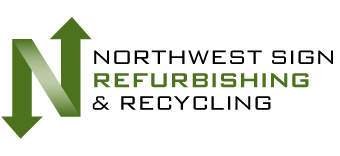ALUMINUM SIGN RECYCLING Final Report
Aluminum Sign Recycling Investigation
Background and Purpose
This report examines the hydro-stripping process for aluminum signs. Conducted by Jon Lazarus at the Oregon Department of Transportation (ODOT), the study aimed to determine if hydro-stripped signs meet ODOT specifications. The focus was on whether the anti-corrosive coating is removed during hydro-stripping.
Importance of Hydro-stripping
Hydro-stripping uses high-pressure water to remove reflective sheeting from aluminum signs. This innovative process provides a sustainable option for reusing signs that typically would be discarded. By facilitating recycling, ODOT can contribute to environmental protection while saving costs in sign manufacturing.
Methodology and Standards
ODOT’s sign fabrication involves three main components: aluminum sheeting, an anti-corrosive coating, and reflective sheeting. Due to a recent change in the anti-corrosive coating, two distinct types now exist within ODOT’s inventory. The project established baseline measurements for the hydro-stripping process to assess compliance with standard specifications.
Sign fabrication follows established guidelines, such as ASTM standards. Specific requirements detail the necessary aluminum alloy grade and the adequate application of chromate anti-corrosive coating. ODOT measures this coating using precise weight differences before and after applying the chromate layer.
Sign Fabrication Process
Typically, ODOT fabricates signs internally. This includes purchasing the materials, cutting them to size, applying reflective sheeting, and assembling the signs. In rare cases, ODOT outsources to vendors. Each sign is logged in a database and subsequently deployed to requesting districts.
ODOT relies on certificates from aluminum manufacturers to confirm adherence to anti-corrosive layer standards. Additionally, staff inspect the sheeting for thickness to ensure compliance and quality.
Future Monitoring and Impact
ODOT is conducting long-term performance monitoring of hydro-stripped signs. This testing will assess how well reflective sheeting adheres to the treated aluminum over time. Continuous evaluation helps ensure that reusing hydro-stripped signs does not compromise safety or performance.
In conclusion, the investigation into hydro-stripping aluminum signs showcases the potential for innovation in transportation sign management. By adhering to strict standards while exploring sustainable practices, ODOT can lead the way for other agencies in efficient recycling efforts.
Acknowledgements and Disclaimer
The success of this project is attributed to the Technical Advisory Committee and key contributors like Greg Stellmach and Wendy Every. This report reflects the views of its authors and does not necessarily represent the official positions of ODOT or the United States Department of Transportation. While information is shared for public benefit, neither the State of Oregon nor the U.S. Government assumes responsibility for its use.
ALUMINUM SIGN RECYCLING
Final Report
SR 500-510
by
Jon Lazarus, Researcher, Oregon Department of Transportation
Oregon Department of Transportation
Link to full report (PDF) here.
